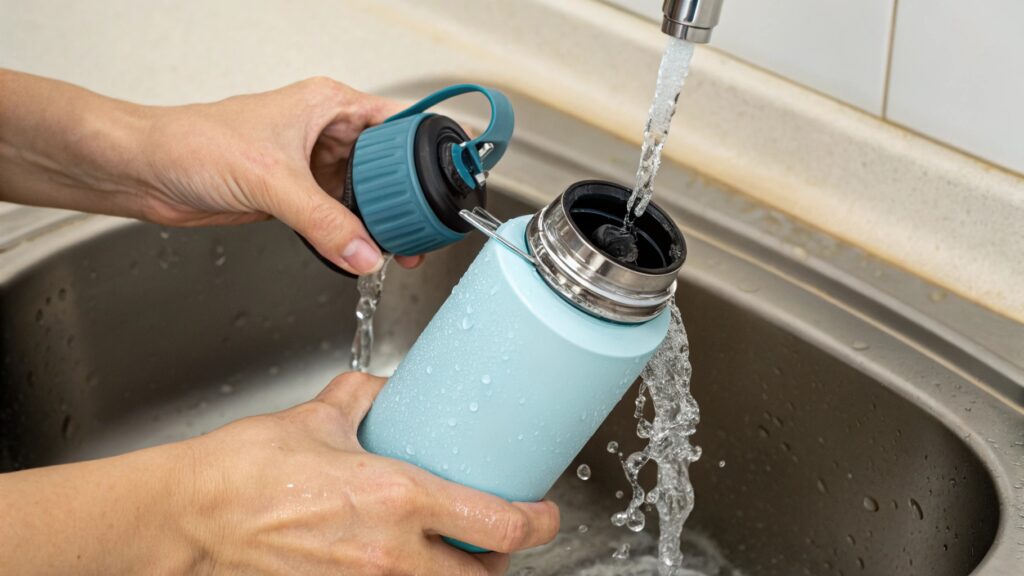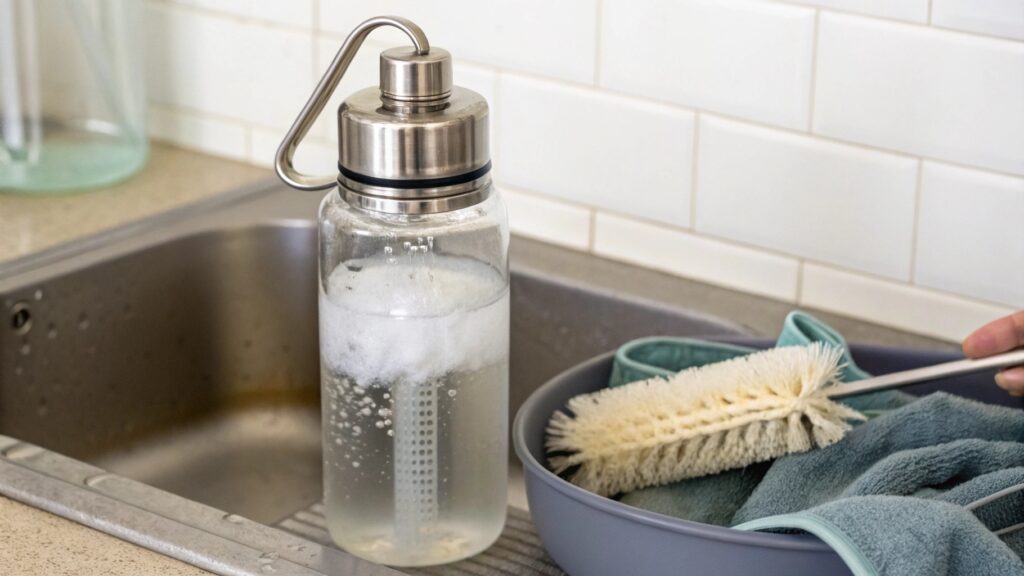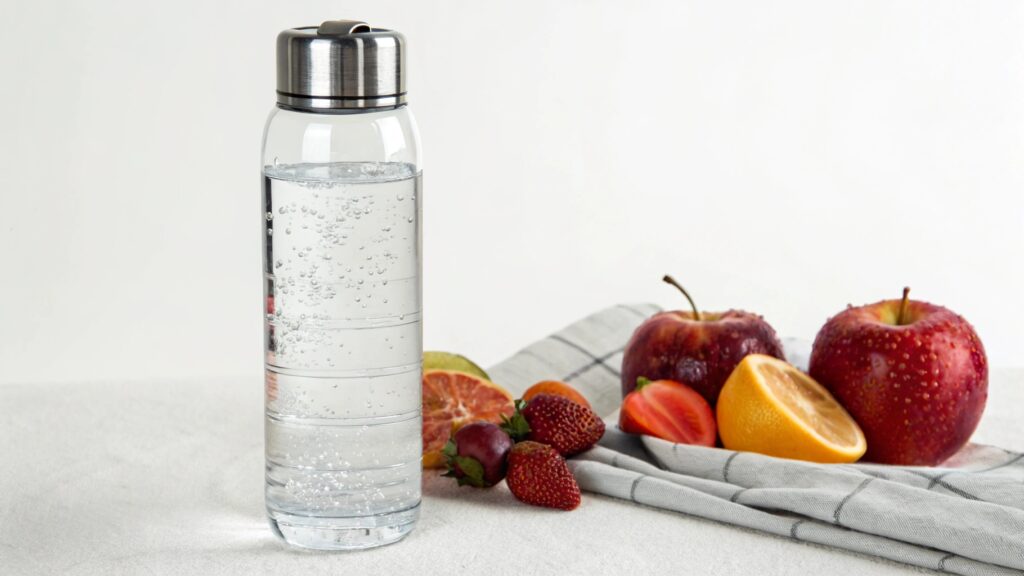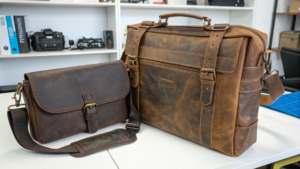What's the Best Way to Clean an Insulated Water Bottle?
Are you just rinsing your insulated water bottle and hoping for the best? Many people do, but it is not enough. You might be harming its performance and your health without even knowing it.
The best way to clean an insulated water bottle involves a combination of daily rinses and weekly deep cleans, focusing on both the bottle interior and its components like the lid and seals. This practice prevents bacterial buildup, removes residue, and maintains the bottle's thermal efficiency and lifespan.

I have learned through my work with corporate gifts, which often include high-quality insulated bottles, that proper care is crucial. A beautiful, well-designed bottle is useless if it is not clean. I want to share the practical steps I recommend to ensure your insulated water bottle stays fresh, functional, and hygienic. It is about more than just a quick rinse.
How Do You Clean an Insulated Water Bottle?
Are you unsure how to properly clean your insulated water bottle1 beyond a quick rinse? It is a common question. Simply washing it like a regular glass will not get rid of all the hidden grime and odors that build up over time. You need a systematic approach.
To effectively clean an insulated water bottle, start with a daily warm water and baking soda rinse to neutralize odors. For weekly deep cleaning, use a mixture of hot water and white vinegar, letting it sit for several hours before scrubbing with a bottle brush. Always remember to thoroughly clean the lid and silicone seals as well.

I know the temptation to just give it a quick swish. I used to do it myself. However, I soon realized that lingering smells and even a strange taste meant my method was not working. My experience has shown me that consistent, thorough cleaning keeps your bottle performing at its best and protects your health. It is a simple habit with big benefits.
Step-by-Step Cleaning Guide
Cleaning your insulated water bottle effectively involves both regular maintenance and deeper, less frequent cleaning.
- Daily Rinse: After each use, rinse the bottle with warm water. For extra freshness, add a teaspoon of baking soda, shake well, and rinse again.
- Weekly Deep Clean (Bottle Interior): Fill the bottle with hot water and add about 1/4 cup of white vinegar. Let it sit for several hours, or even overnight.
- Scrubbing: Use a long-handled bottle brush to scrub the inside thoroughly, paying attention to the bottom and sides.
- Lid and Seal Cleaning: Disassemble the lid if possible. Scrub all parts, especially silicone seals, with warm soapy water and a small brush or even an old toothbrush.
- Drying: Always allow all parts to air dry completely before reassembling to prevent mold growth.
| Cleaning Agent | Purpose | Frequency | Target Area |
|---|---|---|---|
| Warm Water + Soap | General cleaning, everyday | Daily | Bottle interior, lid |
| Baking Soda | Odor neutralization, gentle scrub | Daily/Weekly | Bottle interior |
| White Vinegar | Disinfection, mineral deposit removal | Weekly/Bi-weekly | Bottle interior, lid components |
| Bottle Brush | Physical scrubbing of grime | Weekly | Bottle interior |
| Small Brush/Q-tip | Reaching tight spots | Weekly | Lid crevices, seals |
I have found that the biggest culprits for persistent odors are often the lid and the silicone seals. I learned this the hard way when a favorite bottle started smelling off, even after rigorous cleaning. Once I started disassembling the lid and scrubbing those tiny crevices, the problem disappeared. It is a small step that makes a huge difference in keeping your bottle truly clean.
How Long Is Water Safe in an Insulated Bottle?
Are you curious how long water stays fresh and safe in your insulated bottle? Many people assume that because it stays cold, it stays pristine. The truth is, water can become unsafe even in an insulated bottle, especially if you add anything to it.
Water is generally safe in a clean insulated bottle for up to 24-48 hours if it is plain tap or filtered water. However, if you add fruits, supplements, or sugary drinks, bacteria can multiply much faster, making the water unsafe within a few hours. Always consume flavored water quickly and clean the bottle immediately afterward.

I have had clients ask about this, especially those who use their bottles for protein shakes or flavored water. While insulated bottles are amazing at maintaining temperature, they do not prevent bacterial growth2. My advice is always to be cautious. If it is just plain water and the bottle is clean, you have a good window. But add anything else, and the rules change.
Factors Affecting Water Safety
Several things impact how long water remains safe and palatable in your insulated bottle.
- Plain Water vs. Additives: Plain water is far more resistant to bacterial growth than water with sugars, proteins, or fruit.
- Cleanliness of Bottle: A dirty bottle, especially one with residue, provides a breeding ground for bacteria.
- Temperature: While insulated bottles keep drinks cold, they do not sterilize the contents. Bacteria can still grow, just slower in cold conditions.
- Exposure to Air/Mouth: Each time you drink, you introduce bacteria from your mouth into the bottle.
| Liquid Type | Recommended Consumption Time | Risk of Bacterial Growth |
|---|---|---|
| Plain Water | Up to 24-48 hours | Low |
| Fruit-Infused Water | Within 4-6 hours | Medium |
| Protein Shakes | Immediately, or within 2 hours | High |
| Sugary Drinks | Within 2-4 hours | High |
| Coffee/Tea | Within 6-8 hours | Medium |
I once used my insulated bottle for a protein shake and forgot to clean it right away. The smell the next morning was a powerful lesson. This experience taught me that while insulated bottles are fantastic for temperature, they require immediate cleaning when used for anything beyond plain water. It is a simple habit that prevents unpleasant surprises and keeps your bottle hygienic.
How Often Should I Replace My Insulated Water Bottle?
Are you wondering if your trusty insulated water bottle has an expiration date? Many people keep their bottles for years, but there comes a point when replacement might be the best option for hygiene and performance. It is not always obvious when that time comes.
You should consider replacing your insulated water bottle every 2-5 years, depending on its material, usage frequency, and how well it has been cared for. Look for signs of wear such as persistent odors, mold that cannot be removed, rust, cracks, or a noticeable decline in its ability to keep drinks hot or cold, as these indicate it is time for a new one.

I have seen many well-loved bottles that have simply reached the end of their useful life. While I believe in getting the most out of your items, there is a point where a bottle stops being effective or becomes a hygiene risk. My experience has shown me that paying attention to key signs helps you decide when to let go and invest in a new one, ensuring you always have a reliable and clean hydration companion.
Signs It's Time for a New Bottle
Your bottle will often give you clues when it is time for a replacement. Pay attention to these indicators.
- Persistent Odors: If a strange smell lingers even after a deep clean, it could mean bacteria are deeply embedded in the material.
- Mold You Can't Remove: Visible mold in crevices or seals that scrubbing does not eliminate is a major red flag.
- Rust or Pitting (Stainless Steel): This compromises the integrity of the material and can affect water quality.
- Cracks or Leaks: Any physical damage means the bottle is no longer fully sealed, affecting both insulation and hygiene.
- Loss of Thermal Performance: If your hot drinks get cold quickly, or cold drinks warm up fast, the vacuum seal is likely broken.
| Sign of Wear | Implication | Action Recommended |
|---|---|---|
| Persistent smell after cleaning | Bacterial buildup, material saturation | Replace |
| Visible, unremovable mold | Health risk, deep contamination | Replace |
| Rust spots inside | Material degradation, safety concern | Replace |
| Leaks or noticeable dents | Compromised vacuum seal, function loss | Replace |
| Drinks lose temperature quickly | Insulation failure, no longer effective | Replace |
I once had a stainless steel bottle that, over time, just stopped keeping my coffee hot. It was a gradual change, but eventually, it became clear the insulation had failed. While the bottle still looked fine, its core purpose was gone. This taught me that functionality is just as important as appearance when deciding if a bottle has reached its end.
Conclusion
Cleaning an insulated water bottle goes beyond simple rinsing; it is about preserving its function and your health. Daily rinses and weekly deep cleans are key. Also, remember that water safety depends on what you put in the bottle, and replacing your bottle when it shows signs of wear ensures continued performance and hygiene.





